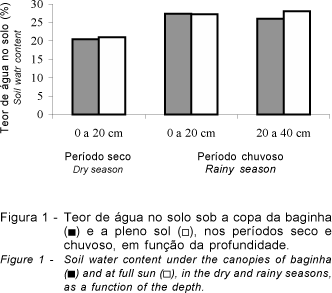The effect of isolated trees of baginha (Stryphnodendron guianense (Aubl.) Benth.) on some aspects of cultivated pasture ecosystems was studied in the Western Amazon of Brazil. Soil fertility, nutrients in the litter, soil water content, light transmission to sward, herbage availability, and chemical and morphological composition of the grasses (mixture of Brachiaria decumbens and B. brizantha cv. Marandu) were assessed under the canopies of baginha trees and in the adjacent open areas. The trees had positive effect on soil fertility, especially with respect to soil organic matter and nitrogen content, with the great deposition of litter rich in nitrogen being the main contribution. The shaded grass leaves were richer in N and K, and poorer in Ca, than the unshaded ones. The canopies of the baginha trees presented low density, allowing the transmission of 27% of the incoming photosynthetically active radiation at noon. The high ground cover (superior to 85%) and good herbage availability under the canopies of baginha trees, in addition to other attributes, confirms the potential of this legume as shade tree for pastures and as component of other kinds of silvopastoral systems in the humid tropics.
shade tree; Brachiaria; legume; silvopastoral systems; sustainability







